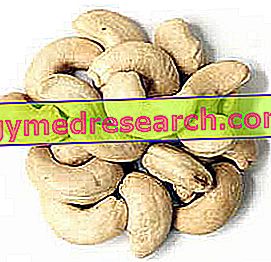Generality
Tapeworm or solitary worm is the name of a multicellular parasite belonging to the category of intestinal worms, ie those worm-like parasites that infest the intestine of the host organism.
Known in the scientific field as Taenia, this worm, flat and very long, is responsible for a parasitosis called teniasis .

There are more than a hundred species of tapeworms; of these, however, only three are of pathological interest for human beings, namely: Taenia solium, T. saginata and T. asiatica .
As a rule, the human being develops the solitary worm infestation after the involuntary ingestion of eggs or larvae belonging to the latter.
The faecal culture test is essential for the diagnosis of tapeworms.
Today's therapy is pharmacological and consists of oral administration of drugs, such as niclosamide, praziquantel and albendazole.
Short reference to helminths

The typical consequences of helminth infestations (called helminthiasis or parasitic helminths ) consist of: debilitation of general health, presence of diseases and / or state of malnutrition.
According to the most traditional of classifications, in nature there would be three main groups of helminths:
- The group of Platelminti or flatworms, which can be subdivided into Cestodi and Trematodi .
- The group of nematodes or cylindrical worms .
- The group of Acanthocephalic or hooked worms .
What is tapeworm?
The tapeworm is a helminth Cestode, known in the scientific field under the name of Taenia . This flat worm causes an elmintiasis that takes the name of solitary worm or teniasis .
The tapeworm represents one of the most "famous" intestinal worms ; intestinal worms are worm-like parasites that infest the intestine and often cause gastro-intestinal disorders.
- Kingdom: Animal
- Phylum: Platelminti
- Class: Cestodes
- Order: Cyclophillides
- Family: Taeniidae
- Genus: Taenia
Sometimes the tapeworm is called the solitary worm, in the same way as the helminthiasis it produces.
Species of interest for human beings
There are more than 100 species of tapeworms (NB: in the scientific classification of an organism, the "species" is the category below the "genus").
Of these 100 species, only 3 are of interest to humans: Taenia solium, Taenia saginata and Taenia asiatica .
- Taenia solium is also known as the " pork tapeworm ", has the pig as an intermediate guest and the human being as the final guest.
Taenia solium has a peculiarity: at the larval stage, it can trigger a parasitosis known as cysticercosis, which can also affect the nervous system.
- Taenia saginata is also known as " bovine tapeworm ", has cattle as its intermediate guests and human beings as definitive hosts.
- Taenia asiatica à similar to Taenia saginata, has as intermediate guests pigs and less frequently cattle, and human beings as definitive hosts.
Features
All the species of tapeworm have in common a flat-ribbon-like appearance, a head called schind and a body divided into many clearly distinguishable small segments.
The scissors can be "armed" or not with hooks and suckers; when hooks and suction cups are present, the tapeworm uses them to adhere to the intestinal walls, during its infestation action.
The segments that make up the body can measure from 1 to 1.5 centimeters and take the name of proglottids .
Like any Cestode, tapeworm has no digestive system; after all, it is nourished by osmosis, absorbing the nutrients already digested by the host organism and present in its intestine.

| Table. Some interesting numbers of Taenia solium, T. saginata and T. asiatica. | |||
| Species of Taenia | Total length | Number of proglottids | Number of eggs produced per worm |
Taenia solium | 2-3 meters, the typical length. 8 meters, the maximum length of exception. | 800-900 | 50, 000 |
Taenia saginata | 4-10 meters, the typical length. 22 meters, the maximum length of exception. | 1000-2000 segments | 100, 000 |
Taenia asiatica | 4-5, the typical length. 8 meters, the maximum length of exception. | 700 segments | 80, 000 |
Origin of the name
The term " Taenia " comes from the Greek word "tainia" (ταίνια), which means "ribbon", "band" or "strip". The use of this terminology is explained, clearly, in the flat-ribbon-like aspect that characterizes the tapeworm.
Causes
Generally, humans develop tapeworm infestation after ingesting eggs or larvae belonging to this particular intestinal worm.
The ingestion of eggs or tapeworm larvae can occur in various ways, including:
- Consumption raw or without adequate cooking of contaminated beef or pork.
In industrialized countries, where strict hygiene and health regulations are in force, the presence on the food market of contaminated meat is generally linked to their importation from poor countries, which, unlike the previous ones, are not as rigid from the point of view hygienic; more rarely, it can be linked to its artisan origin;
- The consumption of water or food, containing or coming into contact with the faeces of an individual or an animal infested with tapeworms. Like the previous circumstance, even this situation is more common in the geographical areas of the world where sanitation is insufficient;
- The close daily contact with a person infested with tapeworms. In such situations, ingestion can occur after having touched the clothing, the sheets, the faeces or the underwear of the individual presenting the infestation, more or less inadvertently.
How can beef and pork, in the poorest countries, become a vehicle for the transmission of tapeworms?
In poor countries of the world, adequate sanitation facilities are often lacking and people carry out their physiological needs in the open air, regardless of who or what can come into contact with their feces or urine.
With the defecation in the open air, a person who houses the tapeworm in his intestine eliminates, together with the faeces, also the eggs of the parasite, which are thus deposited on grasses and plants, contaminating them.
At this point, if farm animals - such as cattle or pigs - feed on the aforementioned contaminated herbs and plants, they introduce the eggs into their bodies or, more often, the resulting larvae, developing as a natural consequence a larval infestation capable of lasting several years.
All this, therefore, could lead to the production, after the slaughter of these infested animals, of contaminated steaks, which can lead to the development of the solitary worm in those who eat them.
Curiosity
In cattle and pigs, the most common sites of nesting of larvae introduced by ingestion of contaminated herbs or plants are the muscles, one of the most edible parts of the aforementioned animals.
Cysticercosis and causes of human cysticercosis
The cysticercosis is the infestation sustained by the larvae - called, for the occasion, cisticerchi - of Taenia solium .
The cause is the ingestion of larvae or proglottids rich in larvae of the aforementioned tapeworm species, and the subsequent transfer of these larvae into some tissues of the body. In other words, the larvae in question renounce the possibility of completing their own life cycle (which would lead them to assume the adult vermiform aspect), to nest elsewhere - for example in the muscles or in the brain - and here form characteristic cysts .
Cysticercosis typically refers to intermediate hosts of Taenia solium, ie pigs; however, the phenomenon in question can also affect human beings.
In humans, a very feared and dangerous form of cysticercosis is the so-called neurocysticerosis ; neurocysticerosis is the larval infestation of Taenia solium, resulting from the establishment of these in the brain.

Life cycle of tapeworm
Much of the life cycle of the tapeworm has already been described in the chapter on how pork and beef, in the poorest countries, becomes a vehicle for the transmission of the parasite.
Therefore, in this section of the article, we will limit ourselves to summarizing the salient and most interesting aspects of the biology of tapeworms.
- The life cycle of the tapeworm starts with the eggs.
In the vermiform parasite in question, the site of accumulation of the eggs is represented by the proglottids, which constitute the body.
The total number of eggs produced varies depending on the species of tapeworm: for example, Taenia saginata manages to generate up to 100, 000 eggs, while Taenia solium half.
The eggs are quite resistant and, in the environment, they can survive for several days, if not even months.
- The vital form following the eggs is given by the larvae, also called cisticerchi.
In the so-called intermediate hosts, the larvae nestle in the tissues, particularly in the muscular tissue, giving up becoming adult worms. The survival of larvae in intermediate hosts can be several years.
In definitive hosts (human beings), on the other hand, larvae tend to complete the life cycle, rather than to remain so (cysticercosis). The way in which the human being introduces the larvae into his organism is a well-known topic.
- The last step in the life cycle is the transformation of larvae into adult worms.
In the final guests, the final transformation almost always involves only one larva, which managed to settle permanently in the intestine and to obtain from this the nourishment necessary for the final development (NB: although it is possible, the transformation of several larvae is very rare) .
Generally, in the human intestine, the transformation of a larva into an adult worm occurs within 2 months.

Epidemiology: the general lines
With its various species of human interest, tapeworm is common throughout the world. However, accurate and reliable data on its distribution are scarce.
In any case, according to most statistical studies, in industrialized countries, the incidence of solitary worm infestation is much lower than that of the poorest countries, where sanitation standards are decidedly lower.
EPIDEMIOLOGY TAENIA SOLIUM
The tapeworm of the species Taenia solium is present in many geographical areas of the world and, in particular, where there is the custom of raising pigs and eating meat.
Among the areas of the globe where Taenia solium infestation is most prevalent, there are Mexico, Latin America, West Africa, Russia, Pakistan, Southeast Asia and the countries Slavs of Europe; against. among the areas with the lowest prevalence, there are the Muslim countries, which prohibit the consumption of pork.
As far as cysticercosis is concerned, this is decidedly more common where hygienic-sanitary measures are poor, therefore in the poorest geographical areas.
EPIDEMIOLOGY TAENIA SAGINATA
The tapeworm of the Taenia saginata species is widespread in all those geographical areas where the human being raises cattle and consumes its meat, regardless of the level of severity of the sanitary policies. Therefore, it can be found both in the countries of Africa, Latin America, the Middle East and South-East Asia, both in the countries of Europe and in the United States.
According to some rough estimates, every year Taenia saginata infestation would affect between 50 and 60 million individuals.
EPIDEMIOLOGY ASIAN TAENIA
The tapeworm of the Taenia asiatica species is present exclusively in Asia, in particular, in countries such as: Taiwan, South Korea, Indonesia, the Philippines, south-central China, Vietnam, Japan and Nepal.
Symptoms and complications
Initially, tapeworm infestation is asymptomatic ; in fact, the first symptoms and signs of the solitary worm appear only a few months after the formation of the adult parasite, inside the host organism.
Typically, people with tapeworms present:
- A strong appetite that, despite the huge quantities of food ingested, does not calm down and does not calm the sense of weakness and tiredness, due to a caloric deficit and vitamin deficiencies;
- Diarrhea alternating with constipation;
- Abdominal pains;
- Nausea;
- He retched.
Symptoms of neurocysticercosis
Neurocysticercosis can be an asymptomatic condition or responsible for an important symptomatology, which includes:
- Epilepsy;
- Headache;
- Confusion, balance difficulties and / or cerebral edema;
- Visual problems.
In the most severe cases, cysticercosis can be accompanied by the development of hydrocephalus, meningitis or paraplegia, and can culminate with the death of the subject concerned.
See also: Symptoms of Cysticercosis
When should I go to the doctor?
The presence of the above symptoms should draw the attention of the subject and urge him to make an immediate medical examination. It will then be the doctor who visits him to establish the next steps, then whether to continue or not to deepen the situation with specific diagnostic tests.
Diagnosis
The identification of tapeworms and the diagnosis of solitary worms are generally based on physical examination, history and stool culture .
Normally, objective examination and anamnesis represent the first step of the diagnostic procedure; the doctor uses them to carefully evaluate the symptoms and trace the probable causative factors.
Instead, the stool culture test represents the final step; it is up to a specialized laboratory, which will, in a few days, confirm whether or not the actual presence of tapeworm eggs.
Thus, stool culture is fundamental to the formulation of a definitive diagnosis.
Curiosity
A person may notice that he is harboring the solitary worm by observing his own feces; the anomaly that could be found is the presence of small yellowish segments (ie the proglottids).
If this should happen, it is very important to consult a doctor immediately.
Therapy
To defeat the tapeworm or worm, the current treatment consists of a therapy based on specific drugs, which act against the parasite so that it can be eliminated from the body through defecation.
Among the drugs in question, we note: niclosamide, praziquantel and albendazole .
Very often, in order to favor the natural elimination of the solitary worm and the eggs from the host organism, after the use of the aforementioned drugs, the doctors also prescribe a laxative- based therapy.
If the pharmacological treatment does not produce immediate results, the only therapeutic solution that remains for the infested patient is a small surgical operation, through which the operating doctor removes the parasite from the intestine. It must be specified that the use of this therapeutic solution is very rare, as the current drugs against tapeworms are very effective.
To learn more: Drugs for treating Tenia infection
Niclosamide
Niclosamide is a medicine specifically indicated for the treatment of tapeworm infestations, whether it belongs to the species Taenia saginata, T. solium or T. asiatica .
Taken orally, niclosamide acts by interrupting a mitochondrial mechanism typical of the solitary worm, which guarantees the energy necessary for growth and development; therefore, without this fundamental energy and without the possibility of developing adequately, the parasite in question becomes vulnerable to the lytic enzymes of the intestine, which can thus successfully attack it and induce its elimination through the faeces.
Method of use: single dose of 2 grams, to be taken in the morning, on an empty stomach.
Possible side effects: gastrointestinal disorders (very rare).
Praziquantel
Praziquantel is one of the most widely used drugs in the treatment of tapeworm infestations.
Taken orally, the praziquantel acts against the solitary worm in two ways: causing spasms and muscle paralysis and altering its canonical morphology. All this guarantees the human intestine the possibility of attacking the aforementioned parasite, through its lytic enzymes, and eliminating it, through the faeces.
Method of use: single dose of 5-10 mg / kg.
Possible side effects: dizziness, feeling of general malaise, nausea, stomach discomfort, skin rash and itching.
albendazole
Also useful against various infesting nematodes, albendazole acts against the tapeworm preventing it from using glucose, a simple sugar present in the intestine of the host due to the digestive process; glucose is a fundamental energy source for the solitary worm, therefore the inability to make use of it decrees the slow death of the latter, due to lack of nourishment.
Method of use: oral intake of 400 grams of the drug, twice a day, for 1-6 months.
Possible side effects: gastrointestinal disorders, headache, leukopenia, thrombocytopenia, skin rash and mild fever.
Prevention
The prevention of the solitary worm is based, mainly, on the consumption of well cooked meats and on the control of risk factors (attention to the meat consumed in underdeveloped countries or of handicraft origin).
Separate cooking, remember that even the freezing of meat (at least -10 ° C for a week) reduces the risk of tapeworm infestations.



